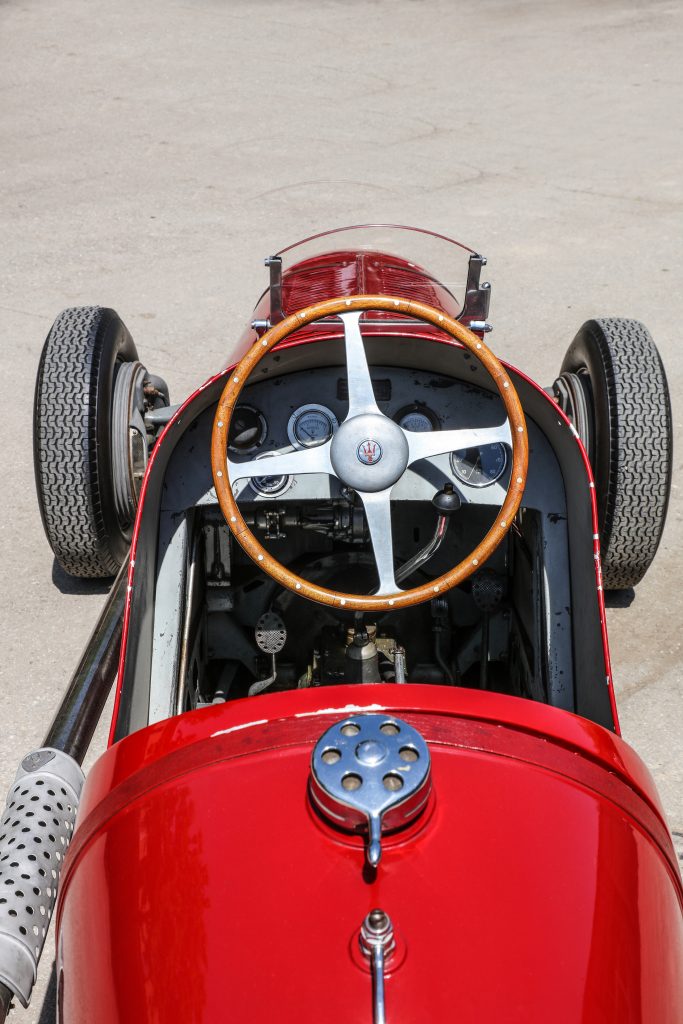Maserati celebrates the eightieth anniversary of Luigi “Gigi” Villoresi’s marvelous win at the 1939 Targa Florio at the wheel of the Maserati Tipo 6CM. The Milan-born driver accomplished victory at the Parco della Favorita circuit in Palermo, Sicily on May 14th 1939 via protecting the race’s 40 laps, totalling 228 km, in 1:40.15.4. Luigi Villoresi additionally recorded the fastest lap in the race with the time of 0:02.24.6, averaging 141.908 km/h. Piero Taruffi and Guido Franco Barbieri completed second and third, also in Maserati Tipo 6CM cars. It was a historic end result for Maserati, confirming its undisputed leadership in the prestigious Sicilian race. Maserati had also dominated the 1937 and 1938 editions, taking the first three locations in each years. Luigi Villoresi additionally finished first in the 1940 edition, using a Maserati Tipo 4CL.
The Targa Florio, one of the world’s oldest and most well-known automotive races, is named after Vincenzo Florio. Florio, a wealthy Palermo businessman already properly acknowledged in the racing world, created, funded, and first organised it in 1906. In complete 62 editions of the Targa Florio took region from 1906 to 1977 (it used to be not held during the two World Wars). The race was once held each and every year, normally in May, on the roads of Palermo. Sicilian roads, particularly the narrow, winding roads via the Madonie mountain range, constantly performed a central section in this race. It was once only in the years from 1937 to 1940 that the event was held at the Parco della Favorita circuit in Palermo.
The Maserati Tipo 6CM, an magnificent single-seater racer, was designed by using Ernesto Maserati and started to take form in 1935. The vehicle was once pretty traditional in looks however its contents had been extraordinarily advanced. Even more ground-breaking than the new engine (a straight six with the cylinders forged in the identical block as the head and organized in pairs on the same elektron crankcase, twin overhead camshafts driven by a rising equipment chain, 2 valves per cylinder and a Roots volumetric supercharger, providing a maximum energy of 175 HP), the car’s most exceptional feature was once its chassis, which marked a primary step ahead in vehicle design. The simple shape was nevertheless the ladder frame, however with revolutionary the front suspensions which supplied a principal gain over English and French competitors. The suspensions consisted of torsion bar springs established so that the spring anxiety should be adjusted to go well with the characteristics of the circuit. Like the relaxation of the car, the bodywork was once updated in a range of ways, especially with regard to its aerodynamics. The extremely rounded shapes, the succession of extraordinary side panel types and the greater slanted front in reality mirrored the lookup into aerodynamics ongoing in the course of the years of its construction. This car’s racing supremacy reached its height in 1938, when it triumphed over the bold British ERA cars that had continually been the Italian constructors’ most dreaded rivals. The equal yr additionally saw the debut of Alfa Romeo’s well-known Alfetta, created for the Vetturette Grand Prix competitions. However, to the Maserati Brothers’ super satisfaction, that year the Tipo 6CM also defeated the Alfetta at the Pescara GP.
The Maserati Tipo 6CM proved to be a notably profitable car: 27 had been built, from 1936 to 1939, and the model received races on Europe’s leading circuits, each with the respectable crew and with gents drivers at the wheel. The Maserati Tipo 6CM holds the file for the most edition wins at the Targa Florio, with three victories in 1937, 1938 and 1939.
The Maserati Tipo 6CM, flawlessly restored to its original livery, is held in Modena and belongs to the Panini Collection.
Key technical features of the Tipo 6CM:
Engine: vertical straight six
Displacement: 1,493.2 cc
Power: 155-175 hp at 6,200-6,600 rpm
Transmission: Four speeds + reverse
Chassis: 2 chassis beams with steel cross-members, aluminium bodywork
Weight: 650 kg
Top speed: 210-230 km/h











